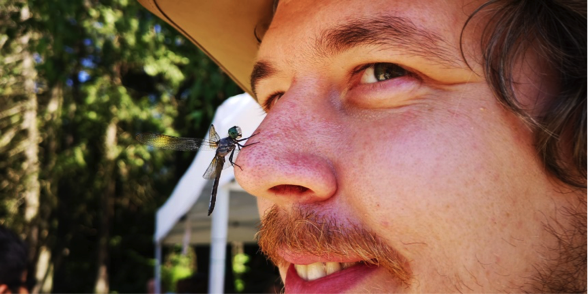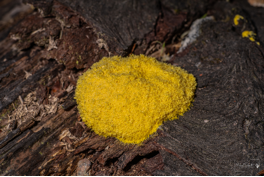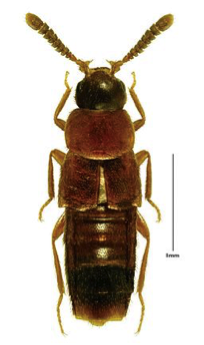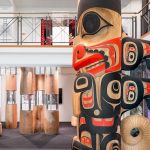The Little Things in Stanley Park
This month’s guest post is written by Micheal Murray, Communications Assistant with theStanley Park Ecology Society (“SPES”).
We’ve all heard the old adage: “It’s the little things that count.” Well, this summer Stanley Park Ecology Society was busy doing just that, counting the little things in Stanley Park. Together with the Entomological Society of BC, SPES held its first-ever insect BioBlitz on July 21st. This BioBlitz marks the start of our Small Things project in which we are taking an inventory of the often overlooked organisms in the Park.

Photo: Dannie Piezas/SPES
The BioBlitz hosted a great turn out with over 160 citizen scientists and 17 volunteers descending upon Beaver Lake, all with one thing in mind: to identify as many species of insects as possible! The results are in: there were 129 observations with 83 species identified. The Cuckoo Leaf-cutter Bee, the False Black Widow and the Incomplete Ant were just some of the amazing species documented in the Park that day. Be sure to check out our inaturalist page for the complete results and photo gallery »
SPES volunteer photographer Michael Schmidt initiated the Small Things project in Stanley Park and has begun photographing insects, slime moulds and other overlooked species. His photographic catalogue of Stanley Park’s small things will eventually be hosted on the inaturalist platform.

(Photo: Michael Schmidt)
Stanley Park is an amazing place and is host to a huge diversity of terrestrial and aquatic animals, plants, and fungi. All too often it is the larger creatures in the Park that get the lion’s share of scientific attention. The Small Things project will give these overlooked creatures some much-deserved attention; eventually, these species’ sightings will be added to our State of the Park Report for the Ecological Integrity of Stanley Park (“SOPEI”).

SOPEI is a record of the ecological health and integrity of the different ecosystems in Stanley Park. It provides information to guide best management practices for operations in the Park, all of which must consider the habitat requirements of ‘species of significance’ like the Great Blue Herons or the Barn Swallows. Understanding which species inhabit the Park, from big to small, provides a clearer path to ecologically sensitive Park management.
Stanley Park may also be home to a number of tiny undiscovered creatures that are found nowhere else. Oxypoda stanleyi is a great example: this tiny beetle – no larger than your fingernail – was first discovered by UBC scientist Dr John Maclean and a group of students in Stanley Park in 2007. So far, this species has not been identified anywhere else!
So, next time you’re out enjoying Stanley Park, keep an eye out for the little things and let us know if you spot anything out of the ordinary. Who knows, you may even discover a new species!
About SPES Saturday

As a member of the Stanley Park Ecology Society, Miss604 wanted to offer the organization an opportunity to share their news, events, so we created the “SPES Series” years ago. This is where SPES can contribute and share stories with the Miss604 audience once a month. Follow SPES on Facebook for more information.










